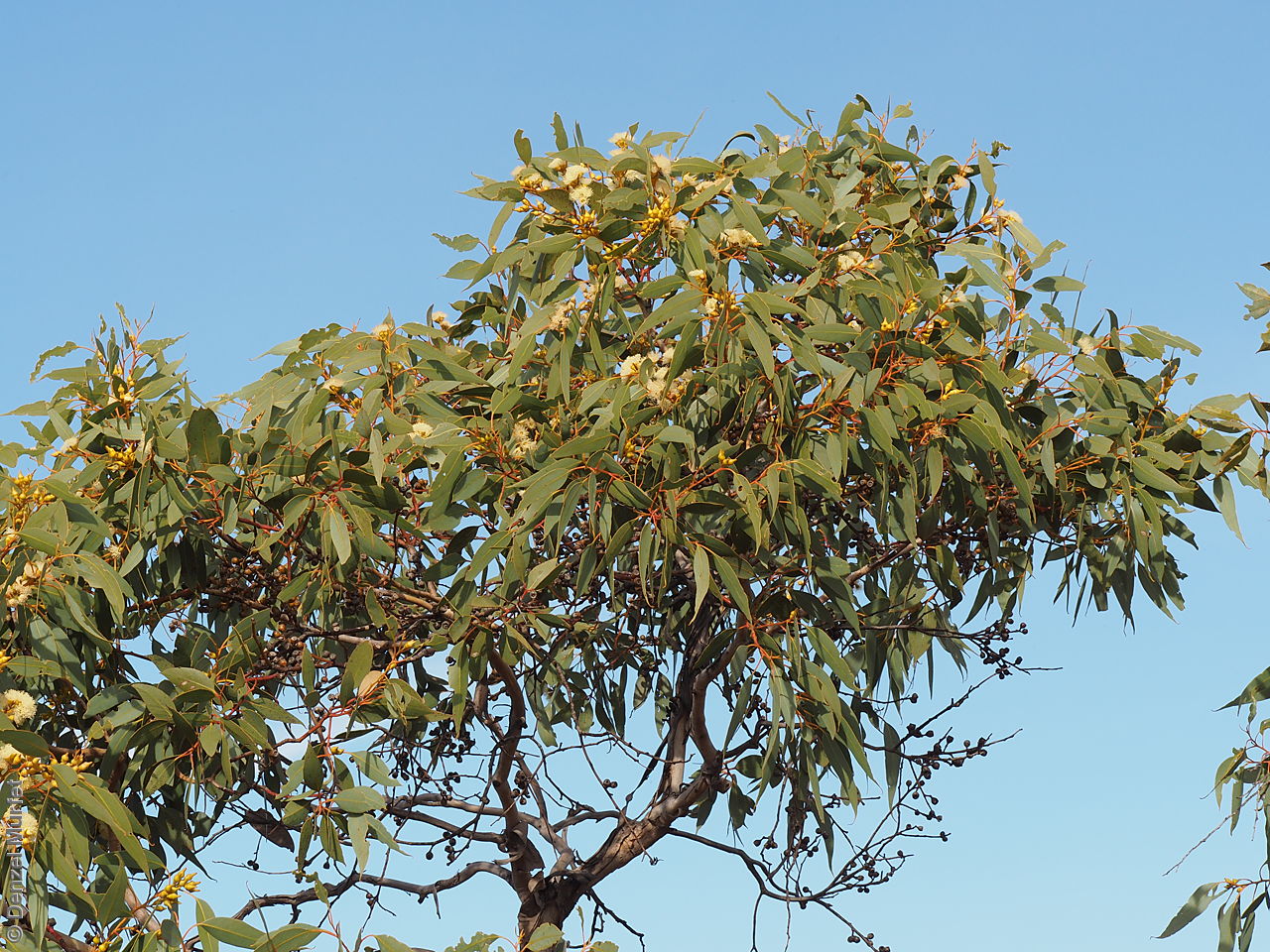
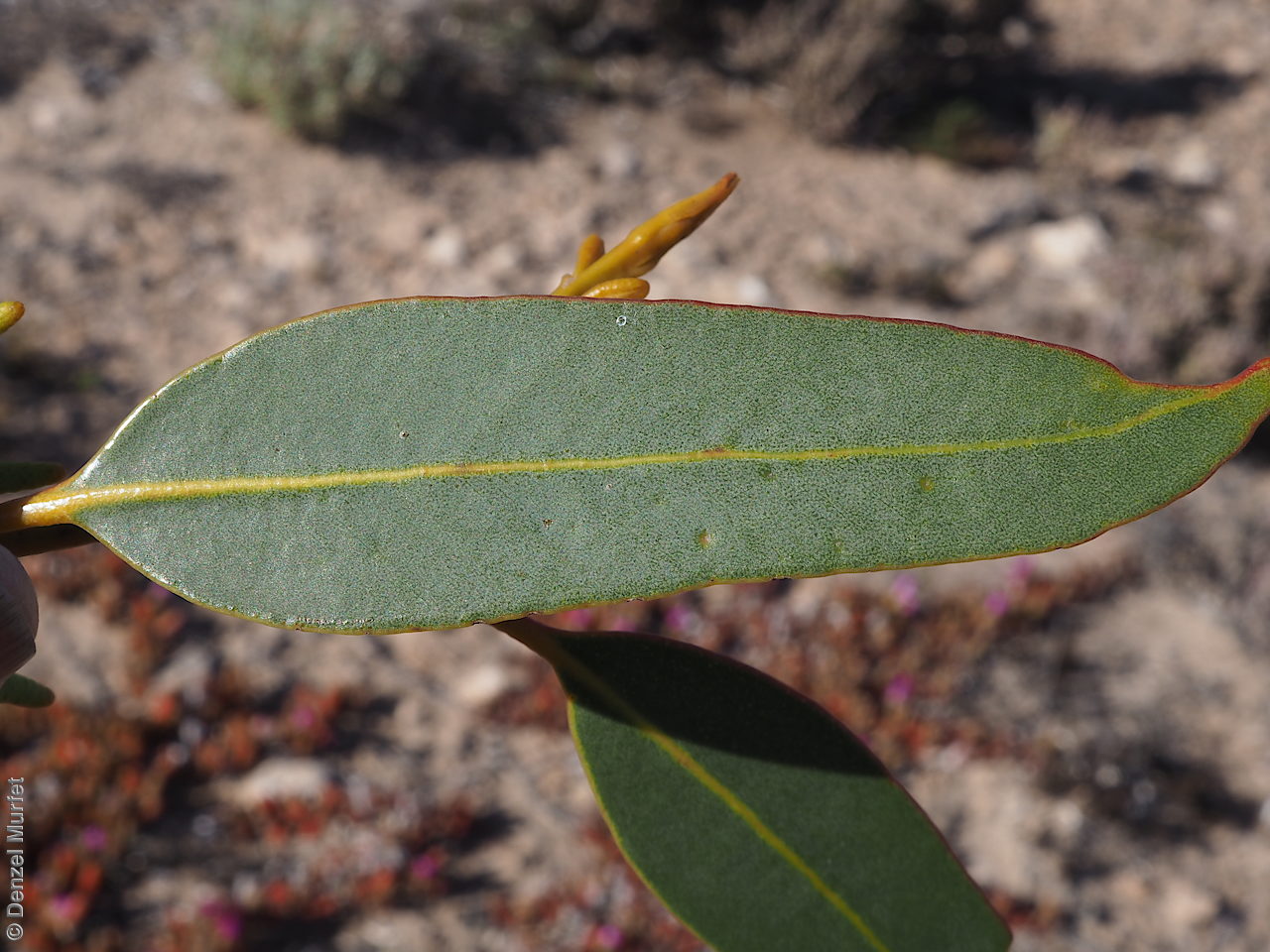
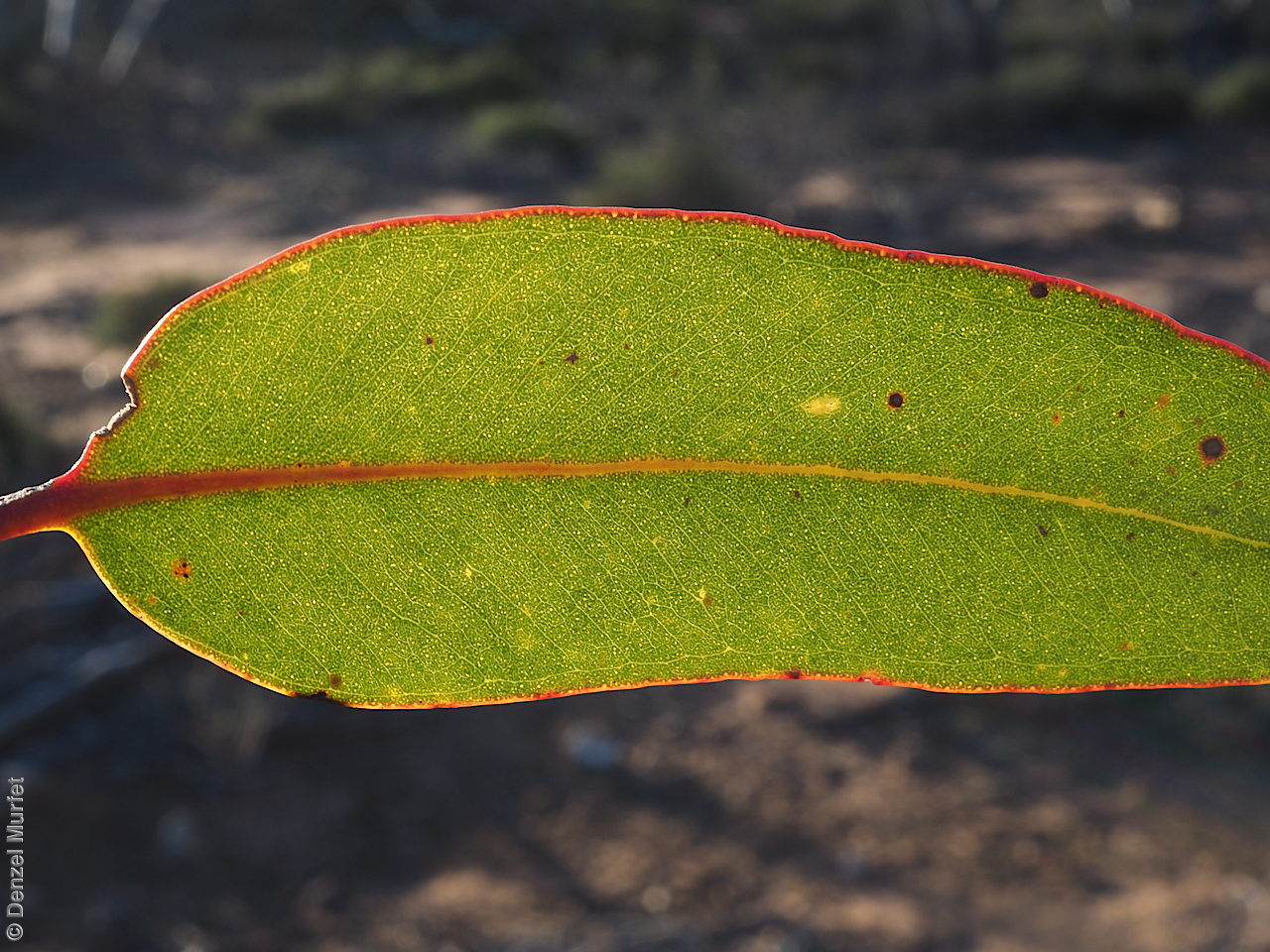
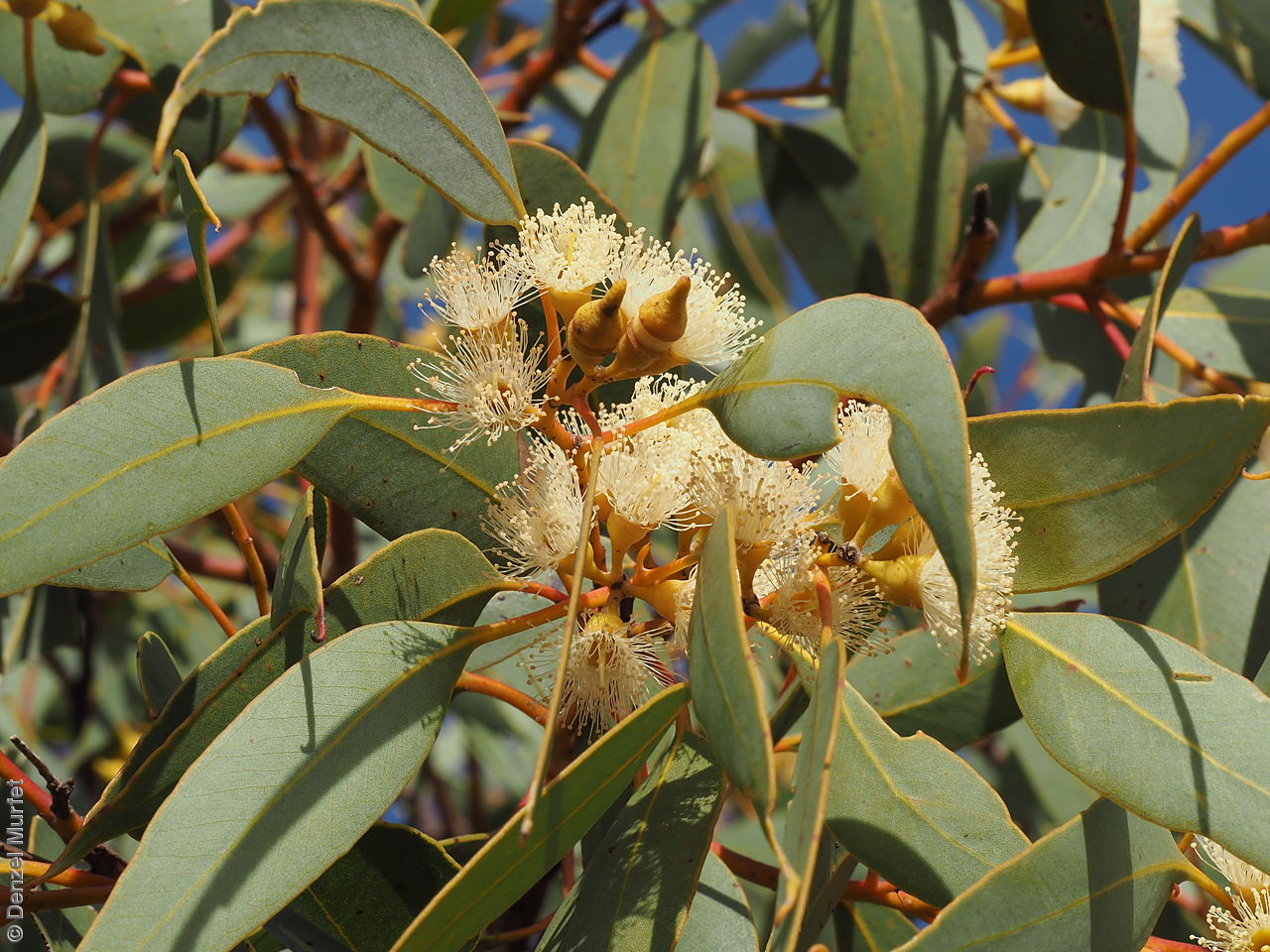
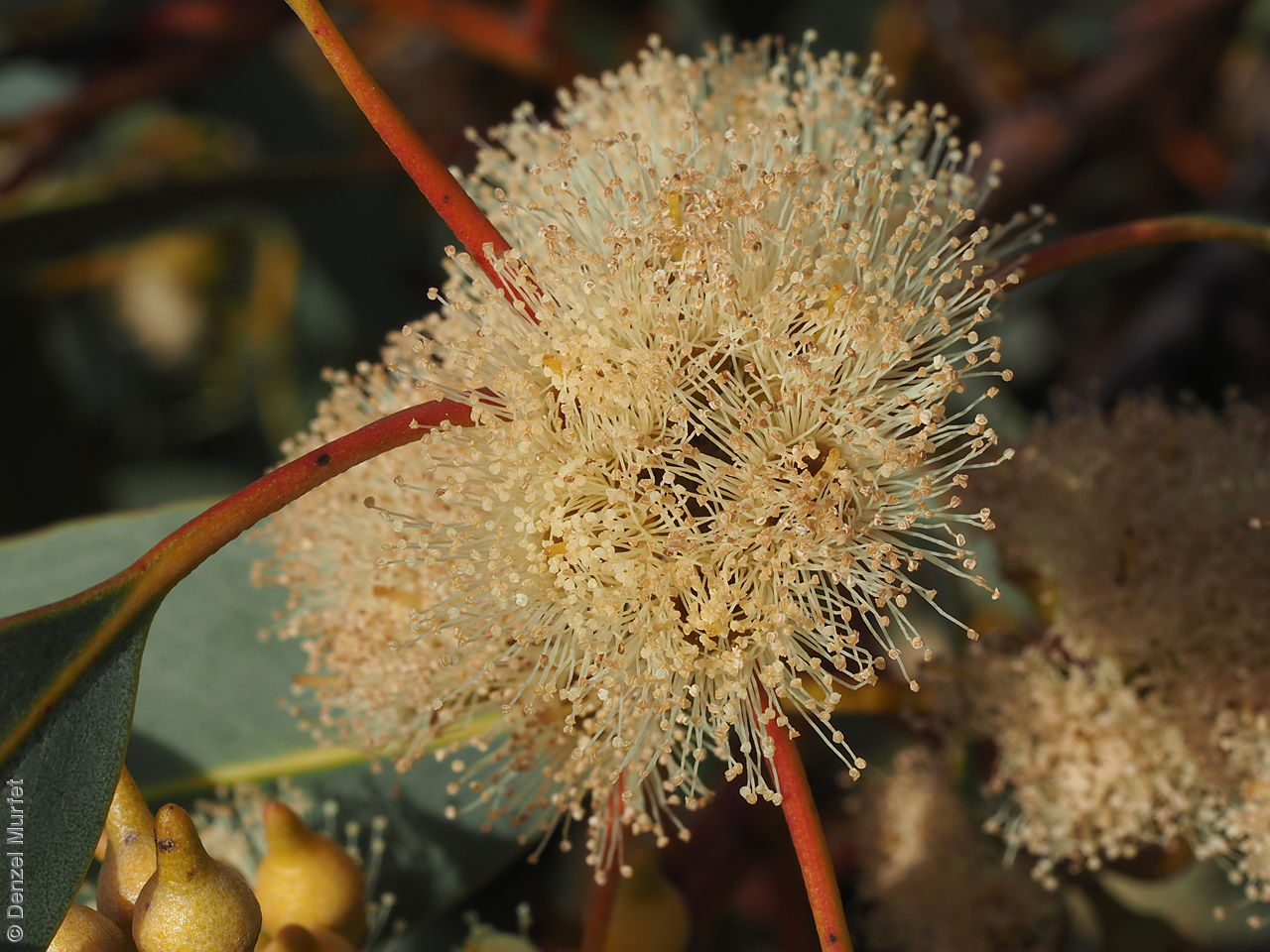
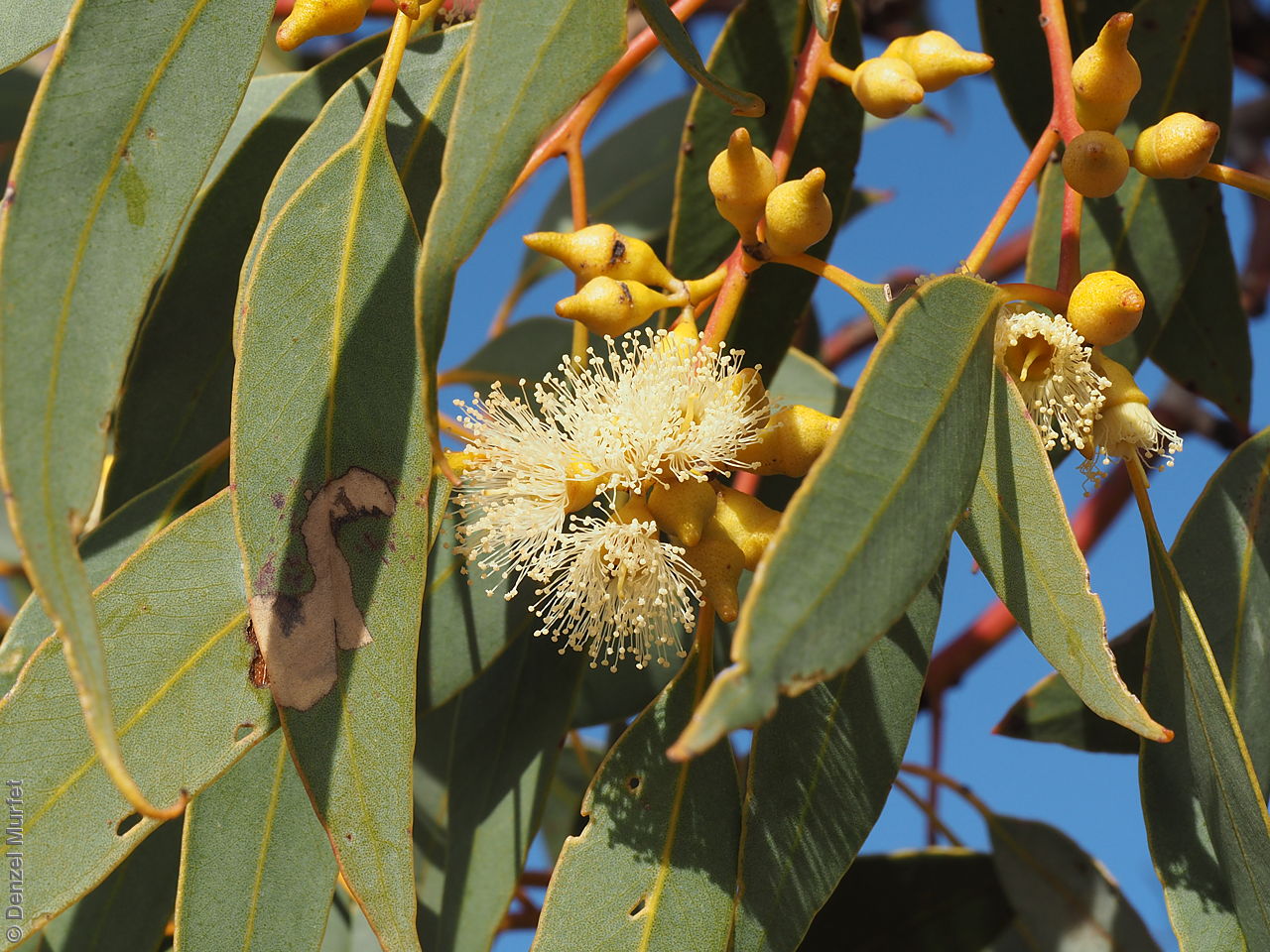
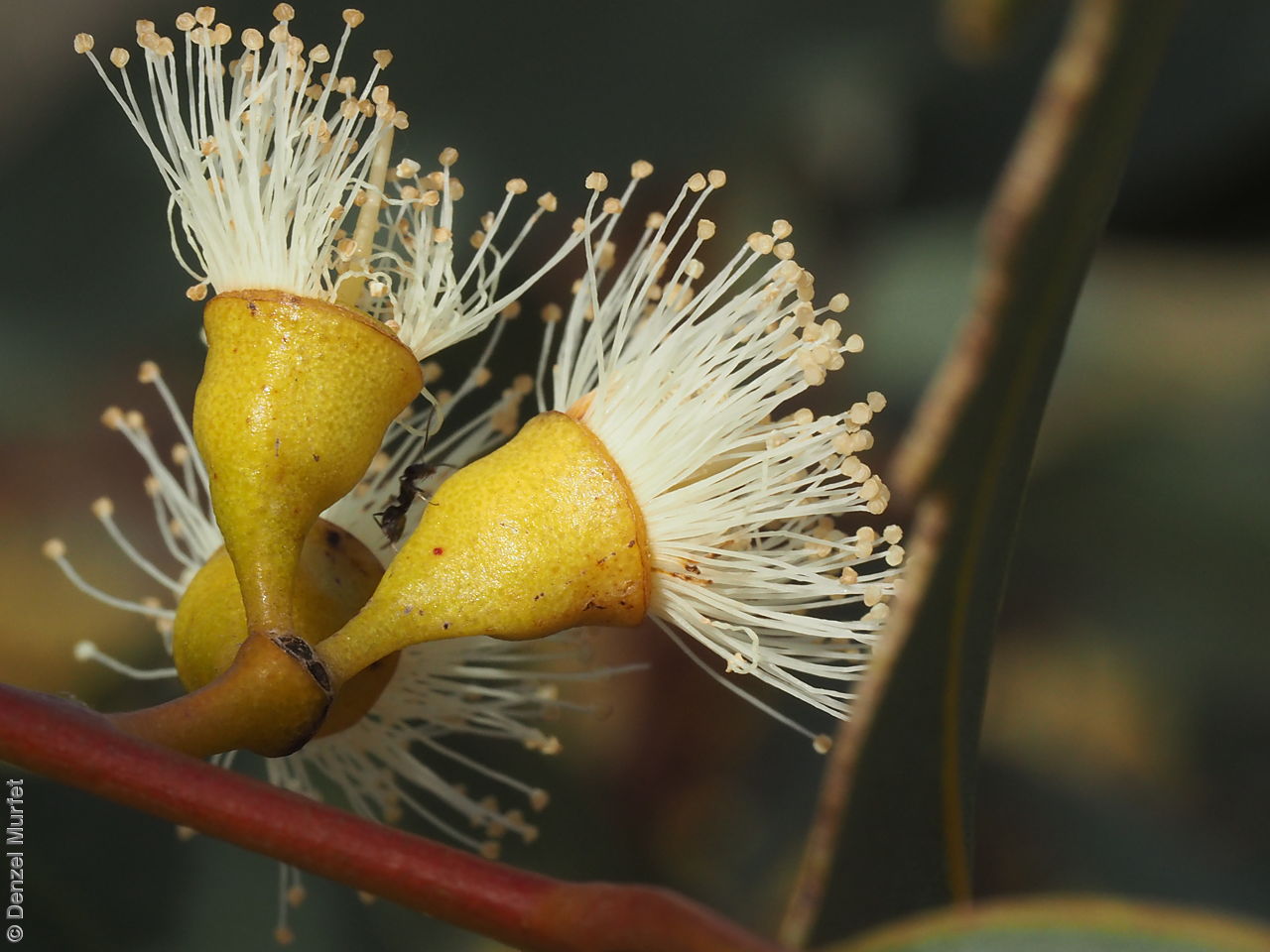
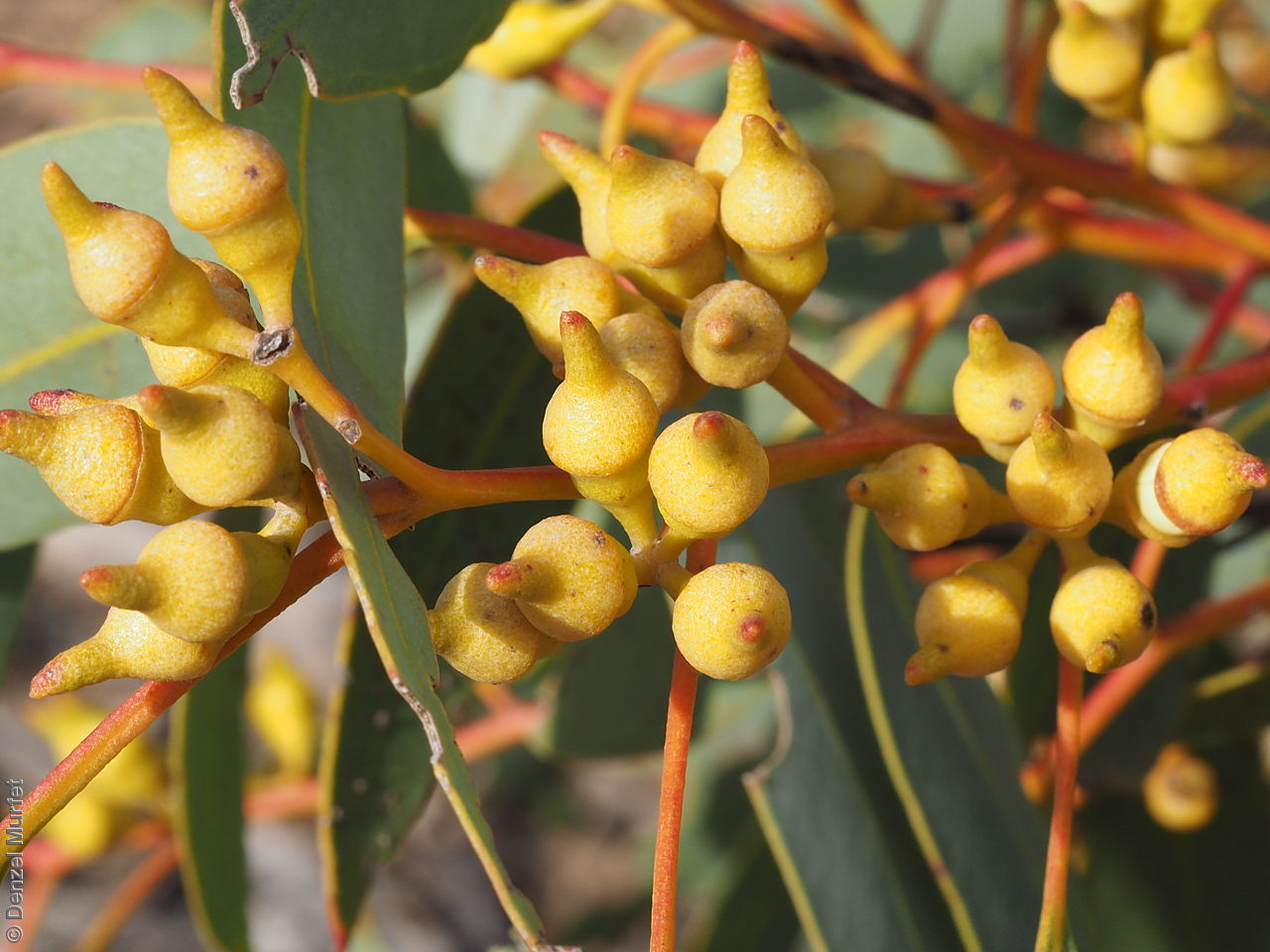
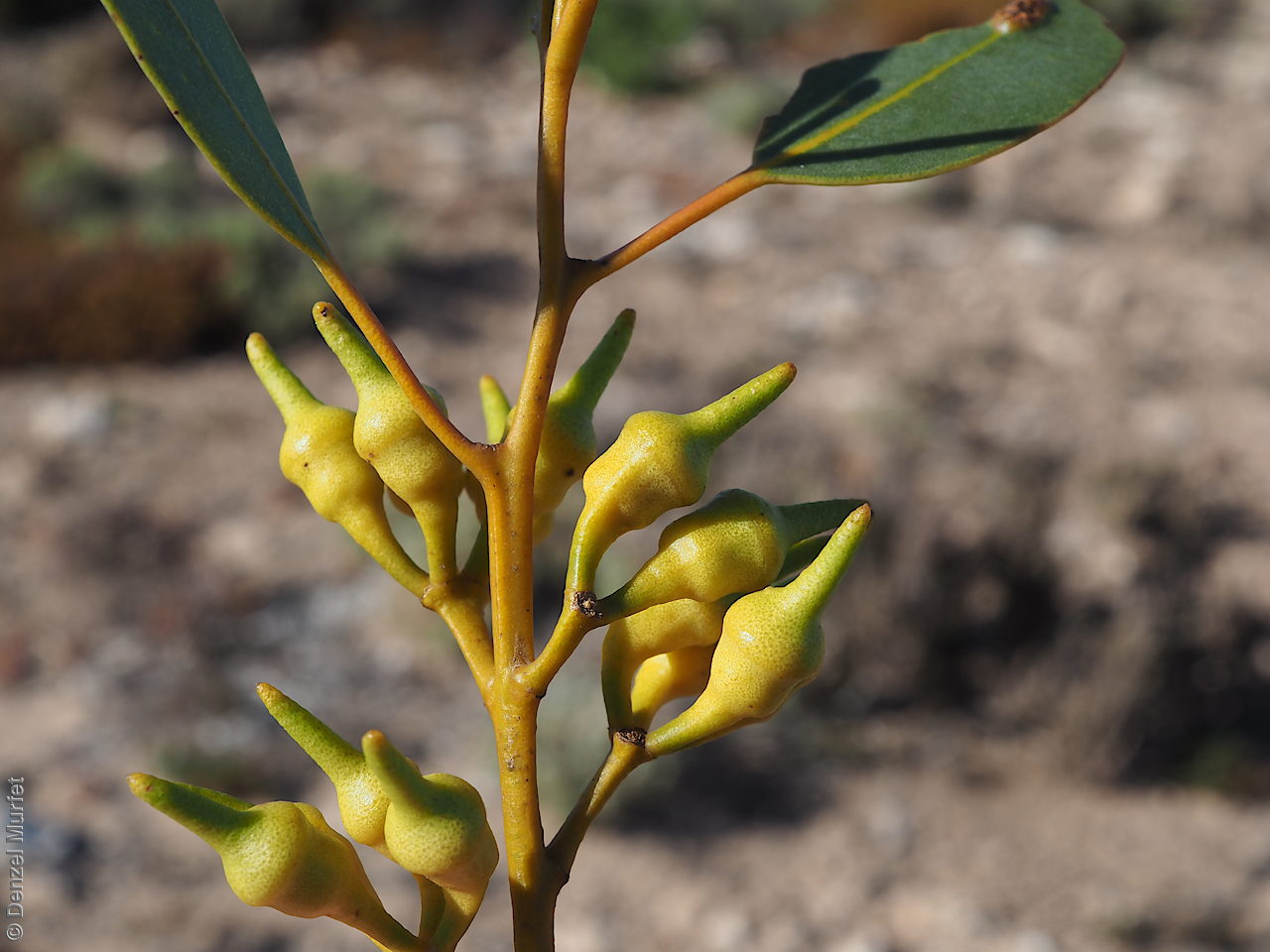
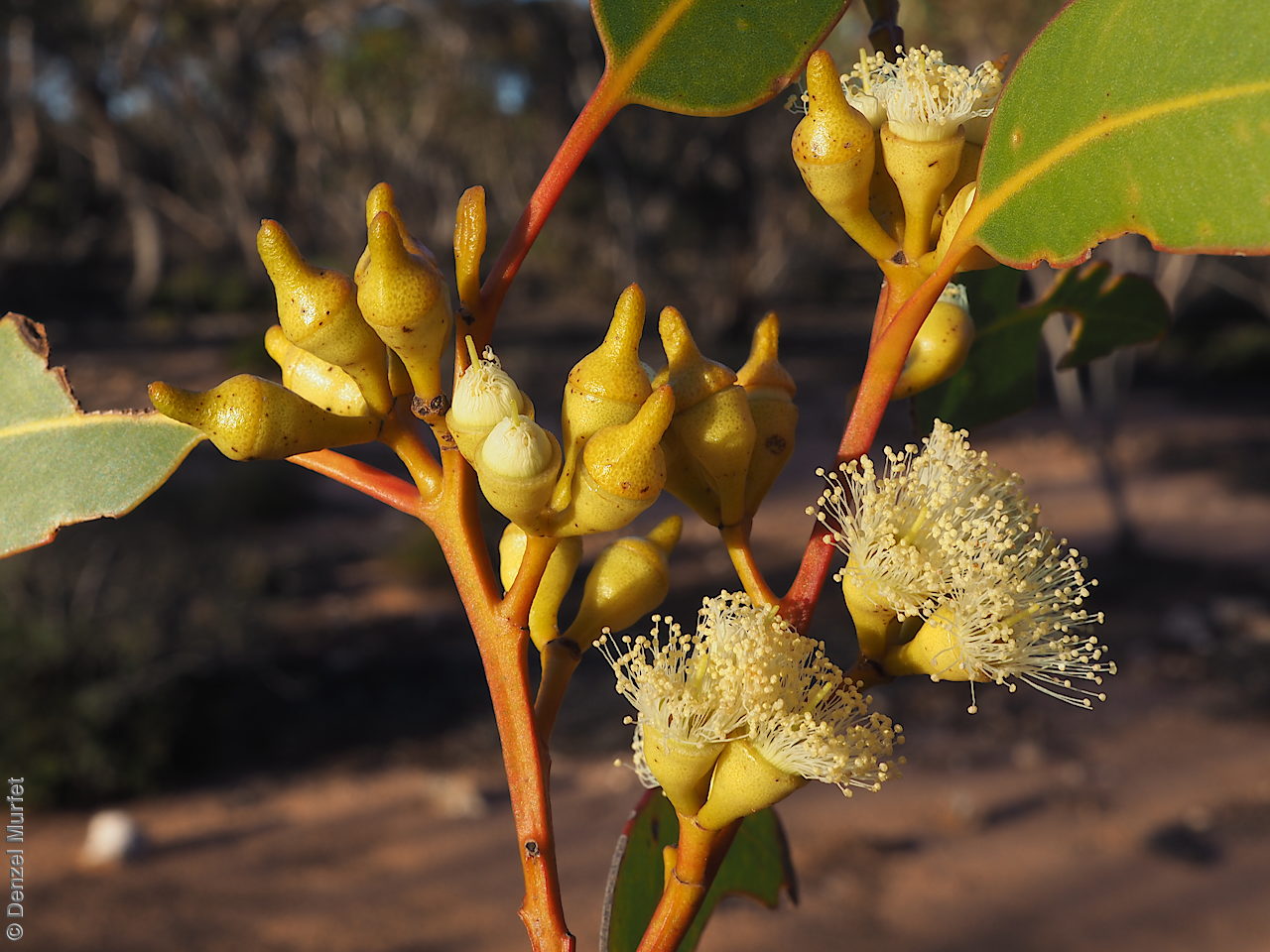
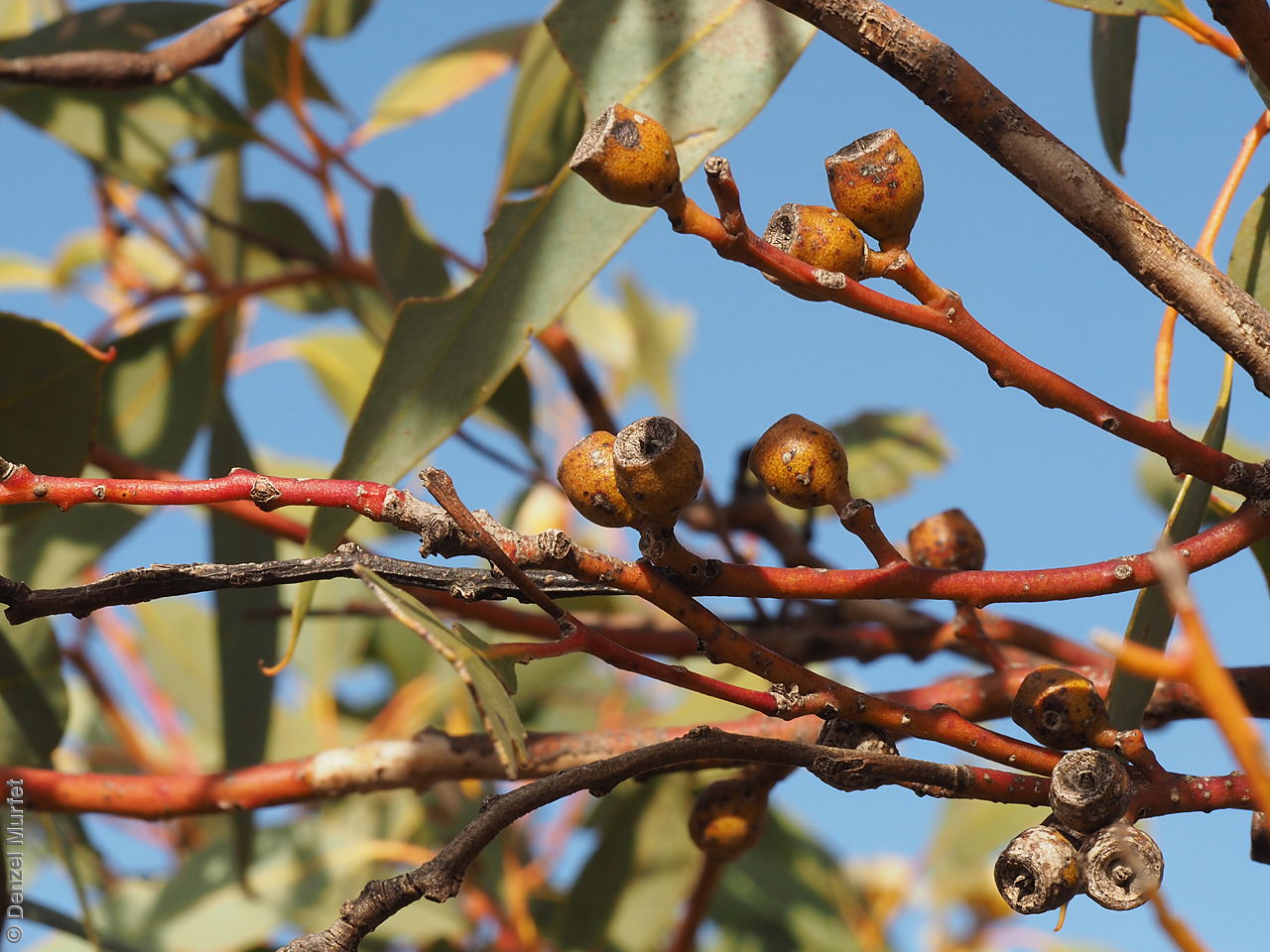
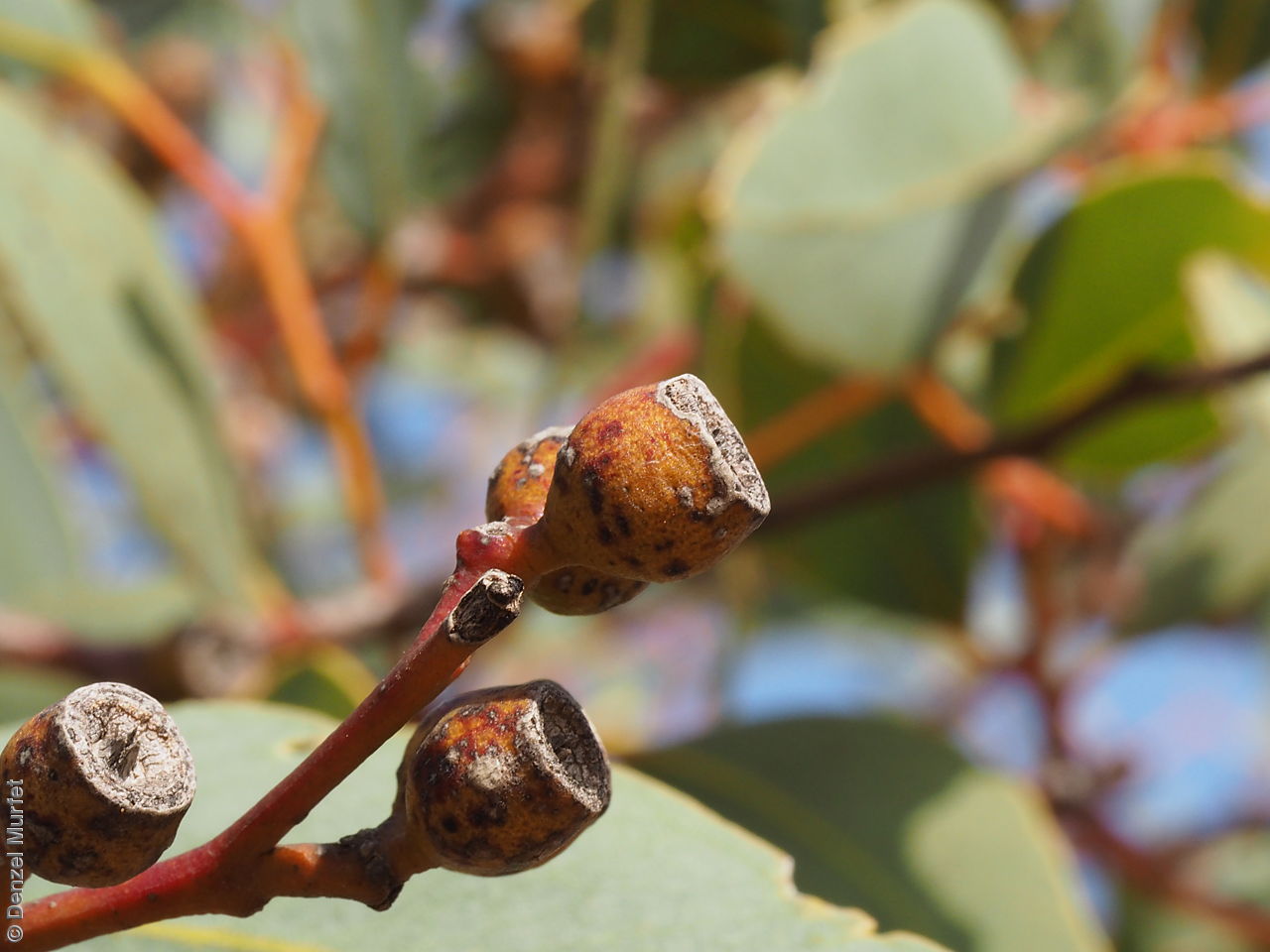
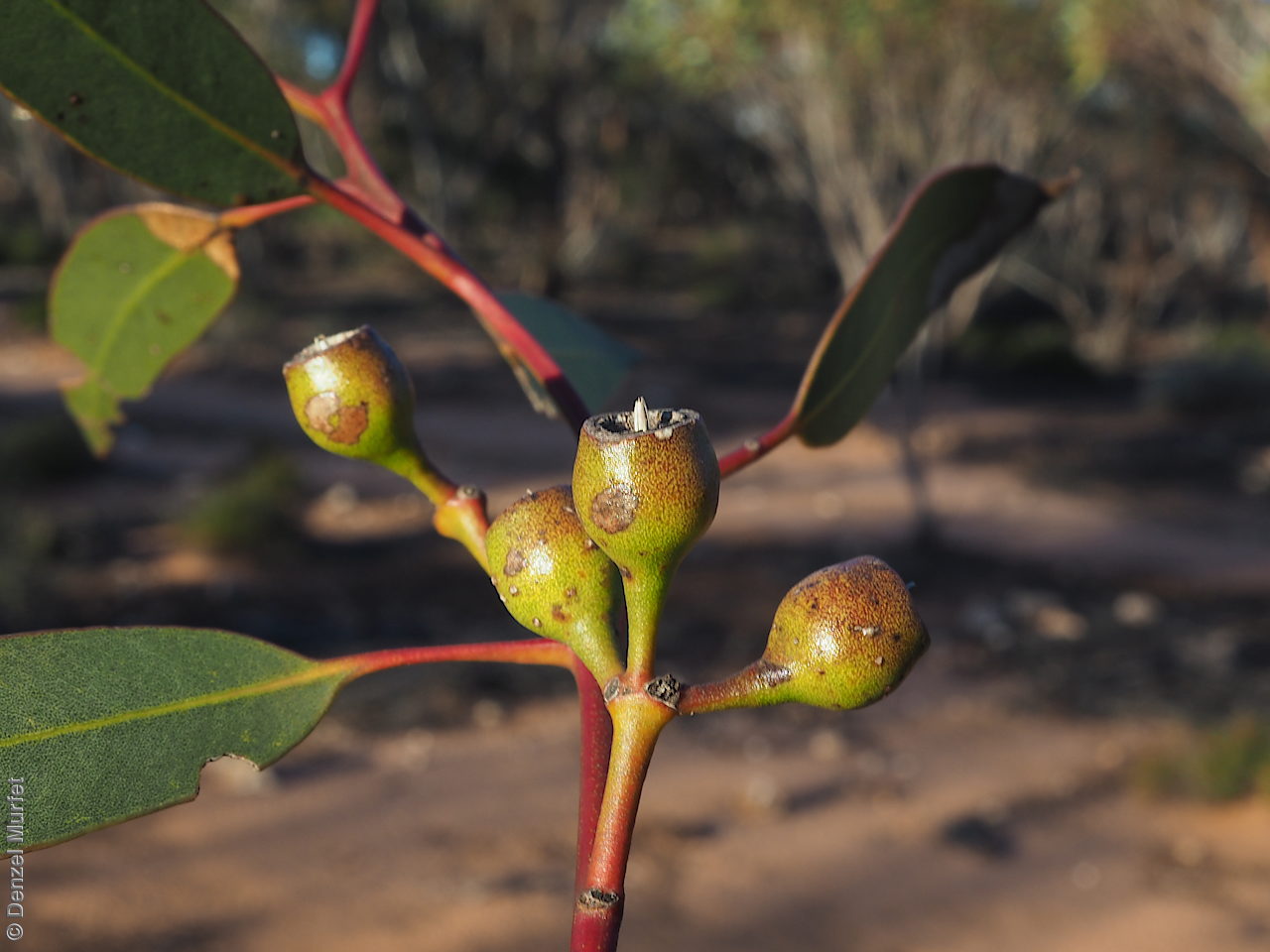
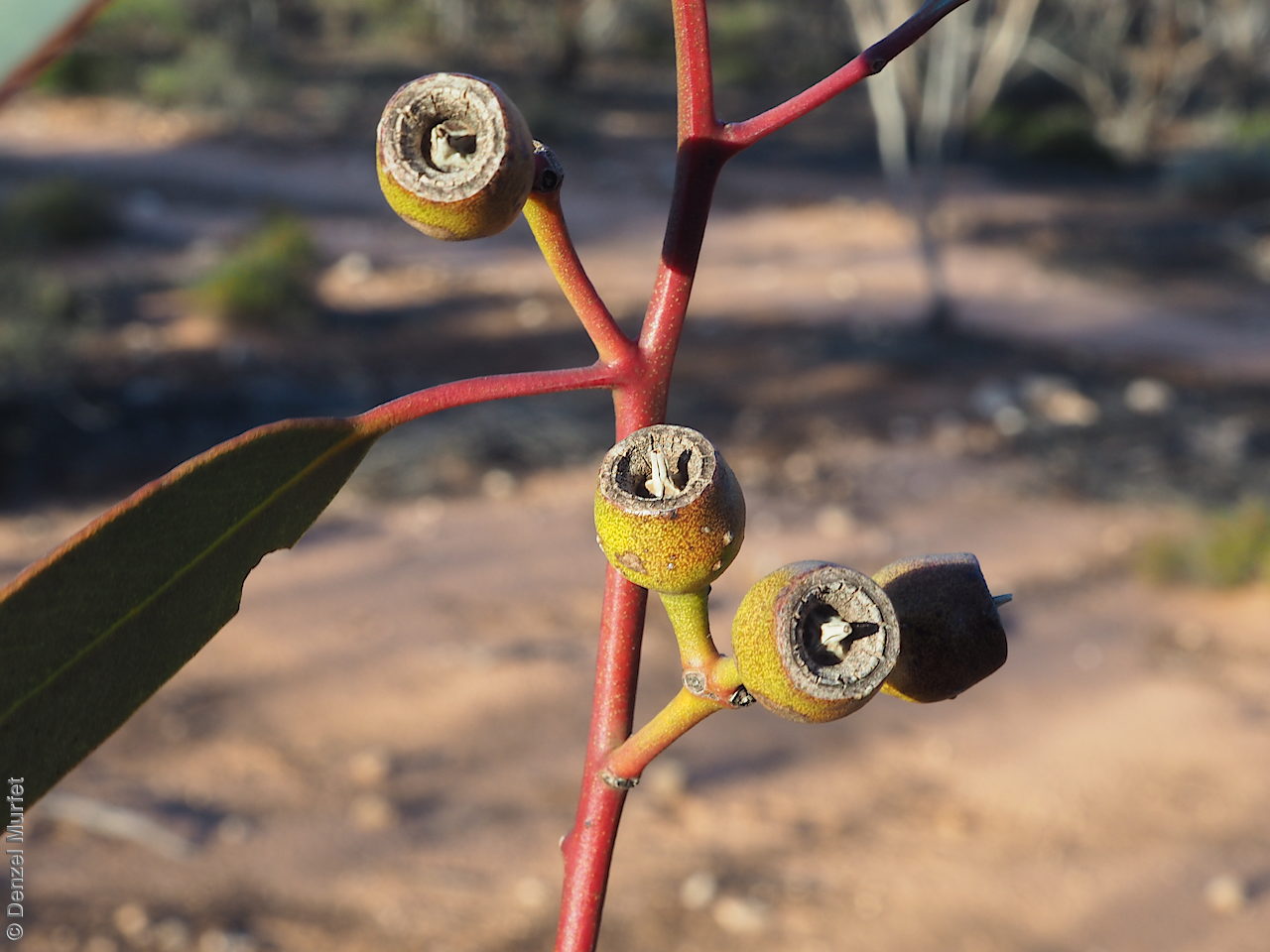
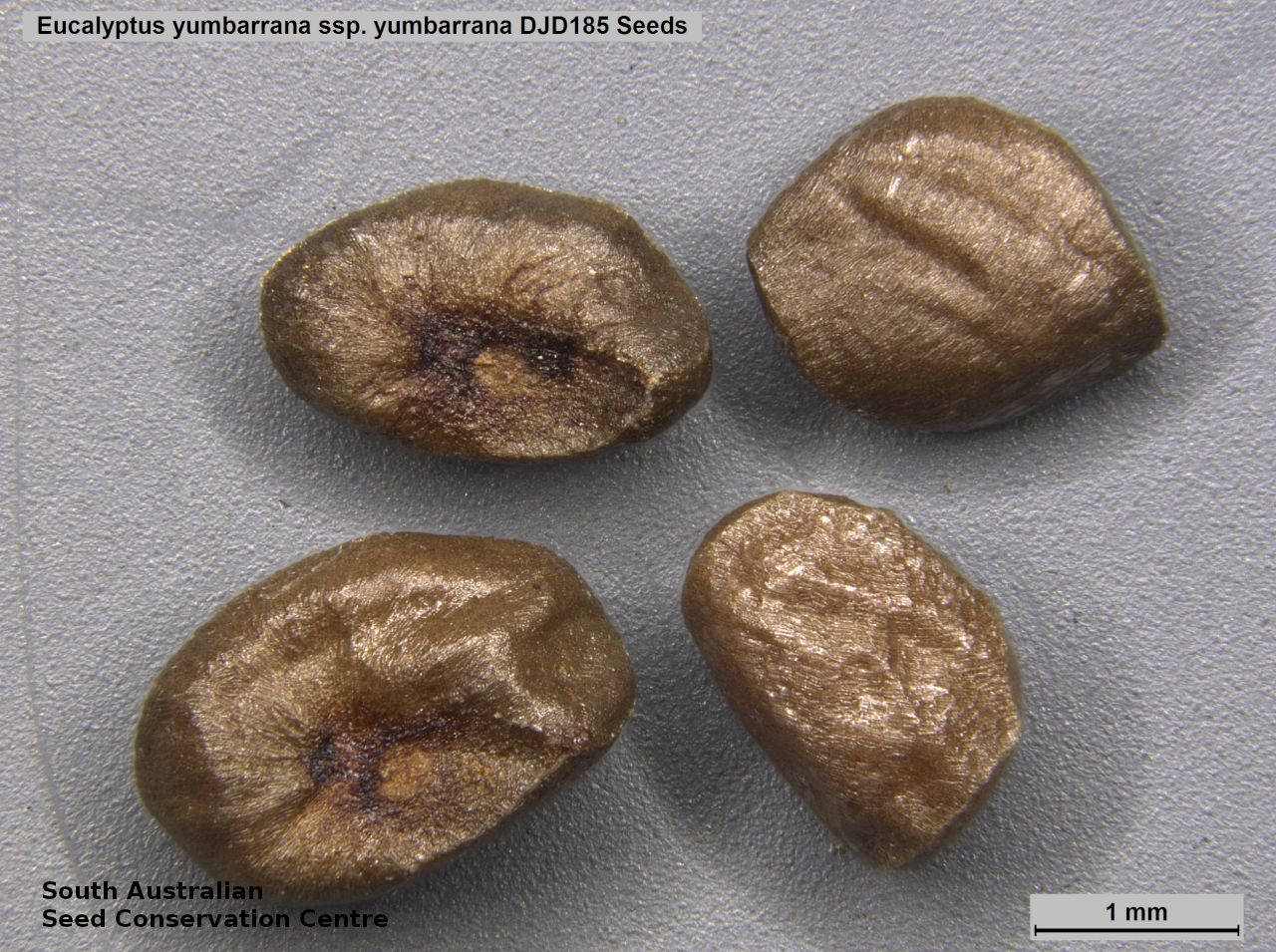

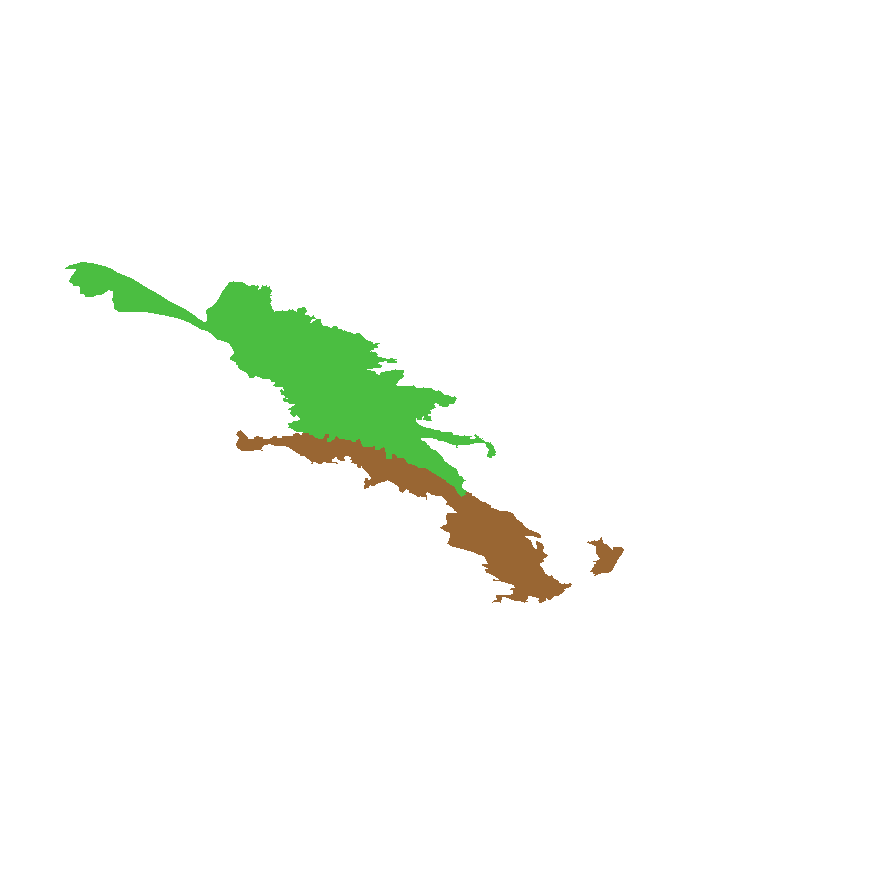
Prior names
Eucalyptus yumbarrana ssp. yumbarrana
Etymology
Eucalyptus from the Greek 'eu' meaning well and 'calyptos' meaning covered, alluding to the cap or lid which covers the stamens in the bud. Yumbarra named after Yumbarra Conservation Park, where the species is common and where the type specimen was collected.
Distribution and status
Endemic to South Australia and found in the south-eastern part of the Great Victoria Desert, growing on white, orange or red sands over limestone on sand dunes in mallee vegetation. Native. Uncommon in South Australia.
Herbarium regions: Nullarbor, Gairdner-Torrens, Eyre Peninsula
NRM regions: Alinytjara Wilurara, Eyre Peninsula
AVH map: SA distribution map (external link)
Plant description
Multi-stemmed mallee to 6 m tall with rough, fibrous-stringy, grey bark on lower stems and smooth, grey to cream bark above. Juvenile leaves ovate, rarely slightly waxy, dull to slightly glossy, green to slightly blue-green. Adult leaves to 133 mm long and 46 mm wide, lanceolate to broad-lanceolate, glossy green. Flowers axillary in groups of 7-9. Buds to 19.5 mm long and 8.5 mm w, sometime slightly waxy, bud-cap horn-shaped, smooth or sometimes ribbed and longer and slightly wider than the base. Flowers pale creamy yellow to red, appearing in winter to spring. Fruits are round to barrel-shaped to urn-shaped fruit to 13 mm long and 11 mm wide; smooth or slightly ribbed, disc descending; valves 4, below the rim. Seeds are brown ovoid seed to 2 mm long and 1.5 mm wide; surface smooth. Seed embryo type is folded.
Seed collection and propagation
Collect seeds between January and December. Collect mature fruits that are dark and hard (difficult to break with a finger nail), with the valves un-open any time of year. Leave the fruits in a breathable container in a dry room for one to two weeks. This allows the valves on the fruit to open and release the seeds. Separate the seeds by placing all the materials into a bucket and shaking it to dislodge the seeds. Pass the material through a sieve to separate the unwanted material. The finer material will contain both seeds (soft) and frass (hard) usually distinguishable from each other but can be very similar in shape and colour. With finer sieves, the seeds can be separated from the frass but this is not essential for storage or propagation. Store the seeds with a desiccant such as dried silica beads or dry rice, in an air tight container in a cool and dry place. From one collection, the seed viability was high, at 90%. Seeds are non-dormant, viable seed should germinate readily.
| Location | No. of seeds (weight grams) | Number of plants | Date collected | Collection number Collection location | Date stored | % Viability | Storage temperature |
|---|---|---|---|---|---|---|---|
| BGA MSB | 13,000 (13.18 g) 13,000 (13.18 g) | 50+ | 4-Nov-2005 | DJD185 Gairdner-Torrens | 8-Aug-2006 | 90% | -18°C |
Number of plants: This is the number of plants from which the seeds were collected.
Collection location: The Herbarium of South Australia's region name.
% Viability: Percentage of filled healthy seeds determined by a cut test or x-ray.